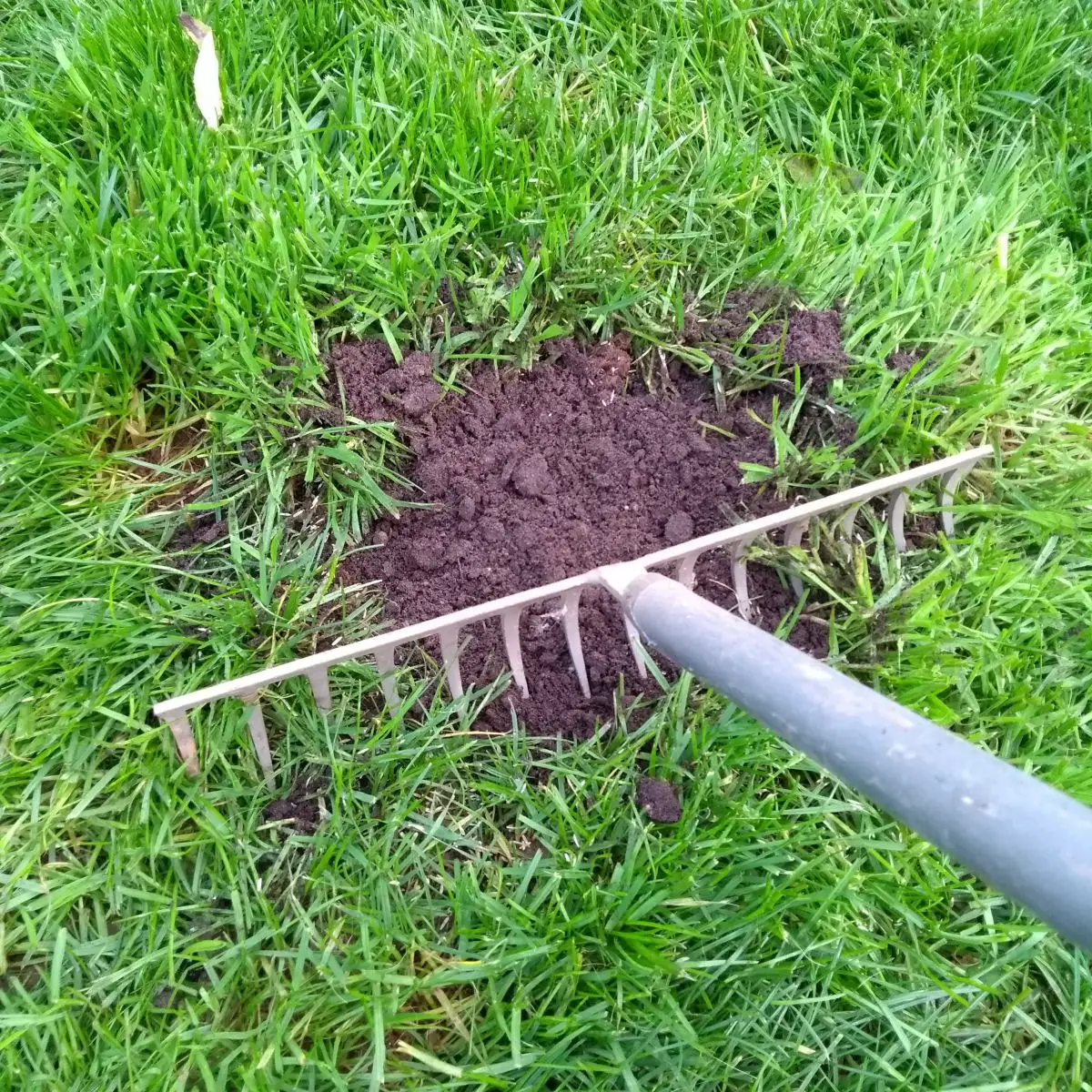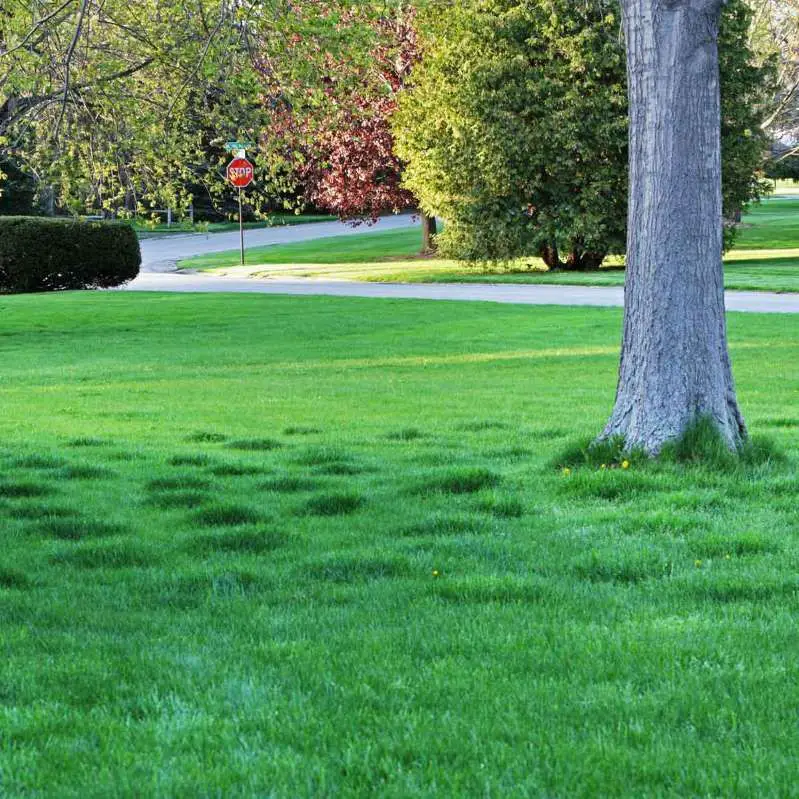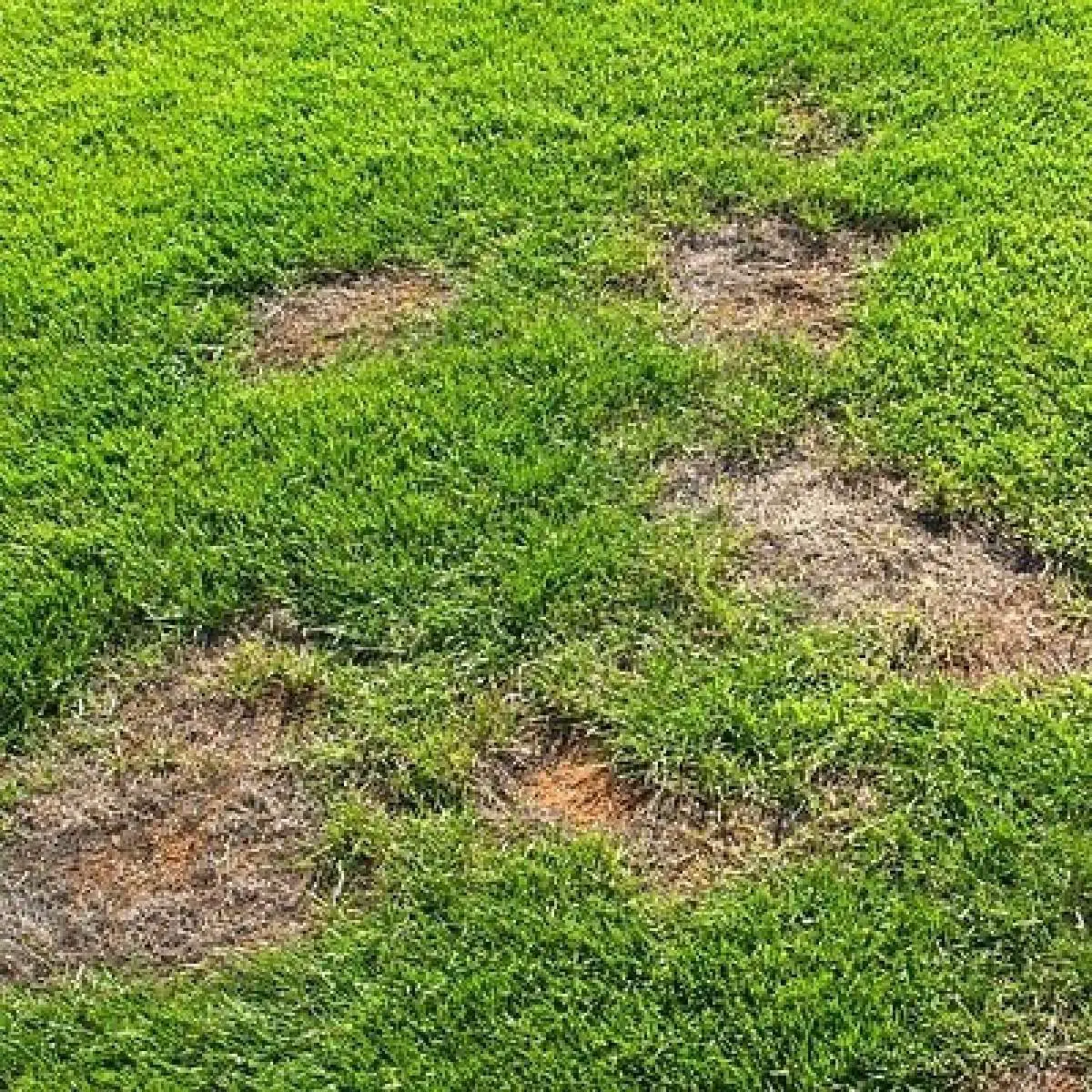Mow Your Grass Properly
It can sound completely counterintuitive, but maintaining a consistent routine with the lawn mower is one way to have grass that is free of patches.
During the growing season, you should mow your lawn at least once a week, and in the winter, you should cut it three times a month.
This will help the grass maintain its healthy appearance and make it thicker and fuller.
How Do You Fix A Patchy Uneven Lawn
A patchy uneven lawn can be an eyesore and it can be difficult to mow. There are several ways to fix a patchy uneven lawn.
One way to fix a patchy uneven lawn is to reseed the lawn. You can either do this yourself or hire a professional to do it for you. If you are going to do it yourself, you will need to buy some seed and a spreader. You will also need to water the lawn regularly.
Another way to fix a patchy uneven lawn is to add topsoil. You can either do this yourself or hire a professional to do it for you. If you are going to do it yourself, you will need to buy some topsoil and a shovel. You will also need to water the lawn regularly.
A third way to fix a patchy uneven lawn is to fertilize the lawn. You can either do this yourself or hire a professional to do it for you. If you are going to do it yourself, you will need to buy some fertilizer and a spreader. You will also need to water the lawn regularly.
A fourth way to fix a patchy uneven lawn is to aerate the lawn. You can either do this yourself or hire a professional to do it for you. If you are going to do it yourself, you will need to buy an aerator. You will also need to water the lawn regularly.
A fifth way to fix a patchy uneven lawn is to overseed the lawn. You can either do this yourself or hire a professional to do it for you. If you are going to do it yourself, you will need to buy some seed and a spreader. You will also need to water the lawn regularly.
When Is The Best Time To Fix Your Patchy Lawn
Spring and autumn are the perfect seasons for fixing your patchy lawn. Thats the time when you should sow your grass seeds if youre starting a new lawn, so it makes perfect sense. The damp and cooler weather will give the grass the best chance to recover. What you should also know when it comes to repairing bare spots on your lawn is that the smaller the patch the bigger the possibility for it to fill in on its own. You see, grass can spread vegetatively and small bare patches may well repair themselves gradually, especially if you water, feed and mow the lawn properly. Larger bald areas, however, will need some attention on your part.
Read Also: When Should You Reseed Your Lawn
Penetrate Grassroots With Aeration
Saul, along with garden expert Noah James, recommends the process of aeration that will increase airflow to the roots, encouraging oxygen for root health. Stronger roots grow deeper and promote a verdant lawn that is more resistant to future patching. The process also eases soil compaction for a versatile lawn for the cooler seasons ahead.
How To Fix Patchy Grass

Theres nothing worse than having a nicely trimmed lawn with perfect edges that shows thinning grass in places and bare brown patches. These bald areas have somehow appeared and now, they give your lawn an eyesore type of look.
The main symptoms of a thinning and unkempt green area are spots with scarcely growing grass along edges, pavings or near garden features, such as the bench you like to rest on with a book or along the raised veggie bed, which needs regular weeding. Also, its not uncommon to have randomly located brown patches in the middle of your lawn for no apparent reason.
- Having bare patches in your lawn
- Wondering what the cause might be
- Looking for the right way to repair your patchy lawn.
Then youre in the right place because this post explains it all. Shall we begin?
You May Like: How To Kill Brome Grass In Lawn
Lawn Patch Repair Steps
If you have problems repairing your lawn get in touch. If you live in the Exeter area of Devon, book a lawn survey and I will be able to look at repairing your lawn for you.
Kris Lord
Other Ways To Repair Lawn Patches
Short on time? You can repair your lawn patches with turf rather than seed for instant results. If youâre using new turf, be sure to lay it as soon as possible once you have it, to prevent it from drying out.
Cutting turf to fix a lawn
Whether you want to repair lawn patches by reseeding or turfing, itâs important to give it a chance to establish before you mow it.
Even with the best lawn mower, youâll need to wait until your newly sown grass is at least 2.42.8in tall . If youâve used turf, youâll need to wait until the grass is 22.4in tall. Donât set the blades too low youâll want to remove no more than 25% on the first cut, say the experts at Premier Lawns.
Donât mow your new grass too soon
Most of us want to know how to get rid of lawn weeds in our garden, however one weed in particular clover can be rather beneficial for avoiding brown patches in your lawn.
Also Check: Where To Buy Murray Lawn Mowers
How To Fix Patchy Grass And Bare Spots In Your Lawn
Kelly Burke is a professional turf manager for a manicured corporate campus in New England. He is accredited in organic land care and is a licensed pesticide applicator. He formerly managed the turfgrass as a golf course superintendent and has held several senior management positions at private country clubs overseeing high maintenance lawns.
- Total Time: 1 – 6 wks
- Skill Level: Beginner
- Estimated Cost: $5 to $10
Bare patches in an otherwise full, healthy lawn may be the result of pet urine, heavy foot or vehicle traffic, infestations by grubs or other pests, or a variety of other causes. There are several ways to effectively patch these areas, but you also need to consider the causes and correct them if you can.
For example, if a bare patch occurs because natural foot traffic continually pounds one area, no fix will be permanent unless you also solve the traffic flow issue. And if the bald spots are caused by a lawn grub problem, new bare patches will crop up as soon as you repair the old onesunless you address the grubs.
There are two easy methods for restoring bald patches in your lawn: reseeding and patching with sod.
Will A Patchy Lawn Repair Itself
Grass has incredible recuperative abilities, and it may quickly repair itself in the right conditions. For instance, grass with rhizomes naturally fills in bald or bare patches on your lawn by spreading laterally.
However, despite grasss remarkable recuperative abilities, weeds invade before your grass can grow. You may therefore need to intervene!
Don’t Miss: How Much Is Lawn Care Service
Tips For Repairing A Patchy Lawn
They say that beauty is in eye of the beholder, but when it comes to lawn care, I think we can all agree that no one likes a patchy or bare lawn. If you walk out to your front yard or backyard and see bald, weak, thin, or bare patches in the grass, try not to lose your cool you can definitely repair them with Nutri-Lawn’s help and a little bit of TLC.
Seeding is a great way to freshen up your lawn and give it a minor makeover. But before you get started, it’s important to find out what caused the patchiness in the first place.
Weed Control & Prevention
As an extra preventative measure against weeds, make sure to use a good weed killer. I recommend using a starter fertilizer + weed preventer .
You have to be careful about what you use, because some pre-emergent weed preventers will prevent your grass seed from germinating.
Once your grass is growing, eliminate weeds early by using a post-emergent weed killer. New grass cant withstand a weed killer until its fully grown in, usually after youve mown it 3 or 4 times. After that, its safe to use.
To spot-treat for established weeds, I recommend using the herbicide Tenacity. Theres a video and how-to included in my article on eliminating lawn weeds.
You May Like: How Often To Fertilize Lawn Texas
Fixing A Patchy Lawnby Eliminating The Problems
As recommended by professional lawn care experts, you can fix the patches in your lawn by eliminating the causes. These causes may include fungi, pests, bugs, or more. With these common grass-eaters eliminated, you can regrow your lawn to make it look healthy again. Determine if your entire lawn will need to be overseeded to plump it up and make it more luscious and thick, or if you just need to treat the patches. Consult with a professional lawn care expert to be sure.
To find reliable, professional lawn care services, products, and advice, look no further than SecureLawn. Our team of yard experts will help you find the best solutions for fixing a patchy lawn and regrowing a healthy-looking yard.
How To Repair Your Lawn To Fix Bare Patches

by Jamie Donovan | Jun 13, 2022 | Yard Tips
A thick, gorgeous lawn doesnt happen by itself.
When you have foot traffic from people and pets, wear and tear can take its toll on your grass and make your lawn look patchy. The next thing you know, weeds will start growing on these patches. What youll be left with is an unsightly lawn you wont get to enjoy.
What to do now? Kick your worries to the kerb because were giving you our best lawn repair tips on how to fix bare patches like a pro.
Recommended Reading: What Is The Average Price For Lawn Service
Aerate With A Garden Fork
Aerating will help to decompact the hard-bare ground making it easier for the healthy grass to spread its roots into the bare soil. Drive a garden fork into the ground to around 100mm and wriggle it back and forth to fracture the soil profile. If you have subsoil irrigation be careful that you dont do so too deeply or where you are likely to come in contact with a pipe. After aerting can also be a good time to apply soil conditioners like gypsum to improve your soil base.
Why Do I Have Patchy Grass
There are several reasons for patchy grass. The most common one is drought. However, patchy grass could appear on lawns that see heavy traffic as the soil gets compact.
If neither of these applies to your yard, look out for pests or fungal infections. Dealing with them could require the use of chemicals, so make sure you read the instructions carefully and stay safe.
You May Like: Does Lowes Sell Lawn Mower Batteries
Should You Cut Patchy Grass
Is your lawn looking a bit patchy? You might be wondering if you should cut it. Here is some advice on when and how to cut patchy grass.
If your lawn is only a little bit patchy, you can probably just mow it as usual. However, if the patches are more than a few inches wide, you may need to take some special steps.
If the patches are caused by dead grass, you can try to revive it by watering it and fertilizing it. If that doesnt work, you may need to reseed the lawn.
If the patches are caused by weeds, you can try to get rid of the weeds by pulling them out or using a weed killer. If that doesnt work, you may need to reseed the lawn.
If the patches are caused by insects or disease, you may need to take steps to get rid of the insects or disease. If that doesnt work, you may need to reseed the lawn.
In some cases, you may need to completely re-sod your lawn.
If youre not sure whats causing the patches, or if the patches are too large to fix with one of the methods described above, you may need to call in a professional.
Think About Aerating The Lawn
Dead patches of grass sometimes signal that it is time to aerate your lawn.
Aerating is the process of creating small holes in the ground that provide air and other essential nutrients to the soil. They go directly to the roots and can improve the overall health of your yard.
You can aerate the lawn yourself by using good lawn aerator. Keep in mind that aeration should be done once a year for most yards to prevent the soil from compacting.
Don’t Miss: How Can I Kill Clover In My Lawn
What To Do If Your Bare Spot Has Thatch Or Dead Grass Overtop
Also Check: How Much Does Truegreen Cost
Restoring Your Lawn After The Winter
After a harsh, cold winter, most lawns need a little TLC. The low temperatures cause the grass to lose its fresh green colour, and you might discover new bald patches that youd never noticed before.
Winter offers the perfect conditions for a range of grass diseases, such as Snow Fungus, which occurs between 0- and 8-degrees and is caused by humidity or extended periods of sogginess due to melting snow.
Grass is a hardy plant, but it falls foul to winter conditions. But fear not: you can restore your lawn to its former glory.
Also Check: When Should I Treat My Lawn For Fungus
What Is The Best Way To Reseed A Patchy Lawn
A patchy lawn can be an eyesore, and it can be frustrating when you try to grow grass and it doesnt take root in some spots. Fortunately, there are ways to fix a patchy lawn. One of the best ways to do this is by reseeding the lawn.
Reseeding a lawn is a process that involves planting new grass seed in areas where the old grass has died or been removed. There are a few things you need to do before you reseed your lawn:
Remove any dead or dying grass.
Rake the soil to remove any rocks or other debris.
Apply a layer of compost or manure to the soil.
Sprinkle grass seed over the area.
Cover the area with a thin layer of soil or mulch.
Water the area regularly until the new grass has taken root. It may take a few weeks for the new grass to grow fully, but it will eventually fill in the gaps in your lawn.
Quick Guide To Lawn Repair

1. Patch your lawn. Repair thin or bare spots with Scotts® EZ Seed® Patch & Repair. There is one exception: If you have a St. Augustine lawn, its best to pull up dead turf or edge out bare spots. Apply Scotts® EZ Patch Lawn Repair for St. Augustine Lawns then place new sod or plugs.
2. Water well. New seed and sod require more frequent watering. Keep your soil moist, but dont drown it.
3. Feed your lawn. After 6 to 8 weeks, give your new grass the nutrients it needs to grow lush and strong. Feed your entire lawn with Scotts® Turf Builder® Lawn Food.
4. Kill weeds and pests. Bugs and weeds will try to creep into your lawn while it grows. Before you apply any weed or bug control product, check the product label to see when it can be applied to new grass.
5. Mow later. Be sure to wait until your lawn is at mowing height before you mow.
Read Also: How To Treat Lawn For Bugs